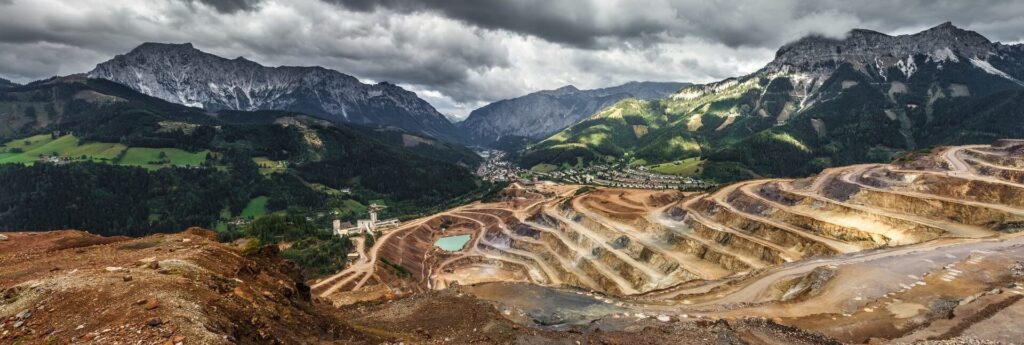However, we would be focusing on how to split the mineral rights from the surface rights into a split estate today.
What does the term split estate mean?
According to American law, a split estate is one where the surface and underground portions of a land parcel are divided between two parties. Several Homestead Acts have led to the development of a split estate, such as the Stock-Raising Homestead Act (1916) and the Alaska Native Claims Settlement Act (1971). A Split Estate In the United States is similar to Broad Form Deeds which were common in the early 1900s as a type of legal document. Just like today’s split estate, these documents were used to sever property into mineral and surface rights.
A Split estate can also occur when the original landowner sells or otherwise lose ownership of their subsurface rights, which is often referred to as the mineral estate. All executor rights are transferred unless stated otherwise, and all of the surface estate’s rights, liabilities, and privileges apply to the administration of the estate as well.
How do you split mineral rights (Oil and gas development) from surface rights?
In either case, mineral deeds and mineral reservations can be used to separate surface and subsurface rights and we would explain them both.
Mineral Deed
When someone with mineral and surface rights sells some or all of their mineral rights to an individual, severance by mineral deed occurs. It is also possible for the mineral and surface rights owners to sell their land to a person and sell the minerals to another for oil and gas development.
If a sale is made, the sale proof will be a mineral deed, which will be recorded at the county recorder’s office (most often).
Mineral Reservation
If an individual owns both the oil and gas development rights and the surface rights and sells the land, leaving the mineral , this is termed severance by mineral reservation. To preserve the mineral rights, the mineral owner only needs to record their mineral reservations with the recorder’s office, other official land title office or county clerk. Individuals, state and federal governments, land management, and lending institutions have all used mineral reservations.
Ag America, for example, is one of Montana’s largest mineral owners. As a result of mortgage foreclosures during the 30s and 40s, the company acquired minerals. After selling the surface estate, a half share of the minerals was reserved.
The federal government also frequently retains mineral rights when it sells a parcel of land (i.e., when it patented the land but still holds on to the mineral rights). There are many other ways to slit estate like dividing mineral rights by specific mineral commodities, or sub-dividing an already divided rights but the two above are the main ways of creating a split estate. In the split estate, the mineral rights are dominant over the surface rights because of the value of the minerals and as allowed by the federal government.
Can you lease or develop oil and gas wells as a split estate owner?
Usually, when a piece of land has surface rights and subsurface rights (such as the right to develop minerals), the mineral rights will prevail over other rights. But courts have ruled that mineral rights do not have any value unless they can be extracted.
This means that mineral owners are entitled to reasonable surface use, regardless of whether they receive permission from the surface owner. With the mineral owner having an upper hand in the ownership of rights, they can lease or develop the oil and gas mineral in the property without the knowledge or authority of the surface right owner. as authorized by the federal government.
However, further directives on who has an upper hand in this relationship may be found in state and federal regulations.
The owners of surface and mineral rights are encouraged to have a dialogue as soon as possible about their plans and needs. A line of communication can be established before oil and gas drilling begins. Surface or mineral owners who lease their rights to another party are encouraged to discuss the use of the property with the other party with an interest in the property. An oil or gas well owner or operator should negotiate with the surface owner a good surface use agreement if the mineral estate has been severed from the surface estate.
The surface use agreement must specify how the loss of agricultural income and losses from improvements will be compensated for by the mineral owner or lessee. If surface use agreements cannot be negotiated, then at least 60 days before the commencement of any surface disturbing activities, the well owner or operator must notify the surface owner of their intent to drill by certified mail.
What are the most common problems with split estates (between surface estate and federal government)?
One common problem with split estates is the dominance of the mineral right over the surface rights. Owners of split estate land often get quite shocked when this happens (especially now that oil and gas drilling is increasing in the United States), unaware that the land can be disturbed and permanently occupied for mineral development.
While many people have begun to see this rule as unfair, the law that places mineral above surface rights has been softened by new strict decisions which determine the amount of surface disturbance that’s reasonable and what practical alternatives one can take to minimize any damage that may arise from mineral exploration.
This has led to the use of a surface use agreement between both rights owners which provided a sort of protection for both parties involved. So while the surface right owner gets compensation for any damage to the surface, the mineral right owner gets protected from being held against trespassing on the land.
Conclusion
Any person looking to purchase a ranch, a cabin site, any rural property or a hunting property should start by reviewing the title to see if the land has been divided. When determining the market value of split estate land, factors such as local zoning, geology (i.e. mineral potential), risk tolerance and intended land use should be considered.






